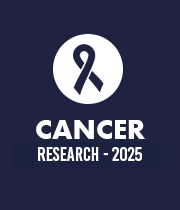Title : Effect of tumor microenvironment and role of lymphocyte pattern on biological behavior and survival outcomes in oral squamous cell carcinoma
Abstract:
Background: OSCC is the 3rd most common cancer in Indian subcontinent. With over 1, 35,000 new cases annually,≈60-80% presenting in advanced stages,5year survival rates are <50% even with multiple diagnostic modalities and early treatment options. There is a multitude of ongoing research focused on tumor host interface histopathological parameters to predict and prognosticate the biological behavior of OSCC for better categorization,to offer a guide for effective and personalized treatment options.
Aim: To evaluate the role of tumor host interface histopathological characteristics in predicting biological behavior of OSCC.
Material and methods: 108 patients of early (T1-2) and advanced (T3-4) OSCC were retrospectively analyzed, N0 and N? disease, who underwent surgery ± adjuvant treatment. Tumor host interface characteristics like tumor bud intensity, lymphocyte host response, e- cadherin expression, vimentin expression, stroma, fibrosis, keratinization grade, Margins DOI, WPOI, Grade, PNI, LVE were evaluated for tumor biology.
Results: Early Tumor stage had a survival of 83% compared to Advance tumor stage 68% (0.02), Nodal metastasis was associated with poor survival outcome of 52% (0.00), Increase in DOI affects survival outcomes (0.02), PNI presence had a 61% survival compared to absence of PNI 80% (0.01), Poor Histopathologic grading was associated with poor survival outcomes 60% (0.001), Lymphocyte pattern I and II had better survival outcomes of 88% compared to type III 65% (0.06), E cadherin reduced expression had a poor survival outcome 63% compared to preserved expression 80% (0.07) however was not statistically significant. On multivariate analysis factors like Margin and Lymphocyte patterns affects DFS (p value- 0.04; HR 2.27 {1.03–5.01} and 0.02; HR 2.10 {1.11–3.97} respectively). Lymphocyte Pattern independently affects overall survival(OS) outcomes (p value-0.03; HR 1.96 {1.03–3.73}). Tumor microenvironment factors significantly affects both DFS and OS in entire cohort p-value (0.02 and 0.05 respectively) at a mean interval of 24 months.
Conclusion: From histopathological viewpoint, Advance stage, depth of invasion, PNI have been suggested as simple markers reflecting higher lymph node metastasis, locoregional failures, and reduced DFS. Other than these established factors, lymphocyte host response pattern, E cadherin expression also affect tumor progression and survival outcomes. In future, these factors may have a significant role in selection of treatment strategy of oral SCC, such cases may be kept under enhanced follow up strategy or require escalation of adjuvant therapy.


